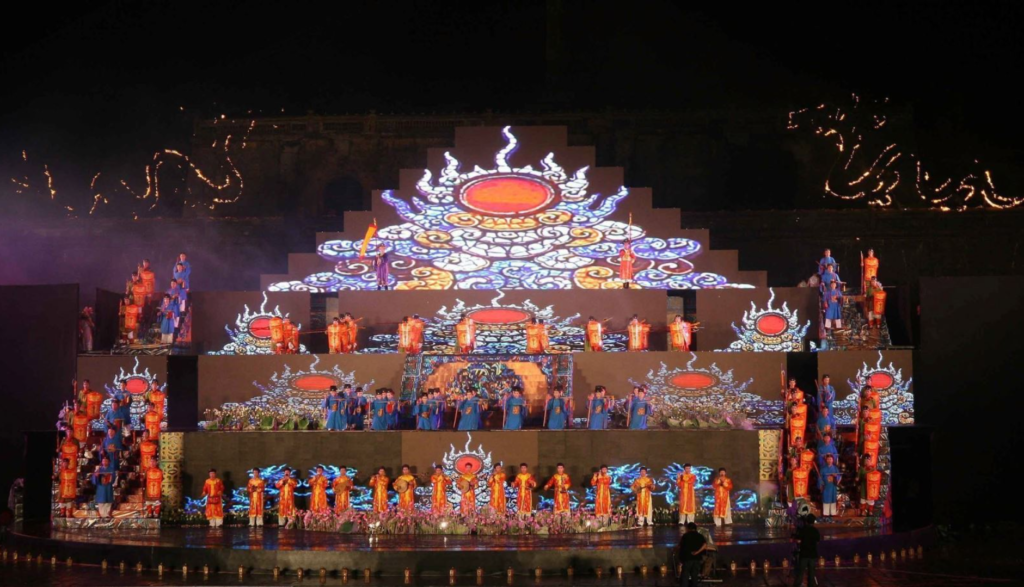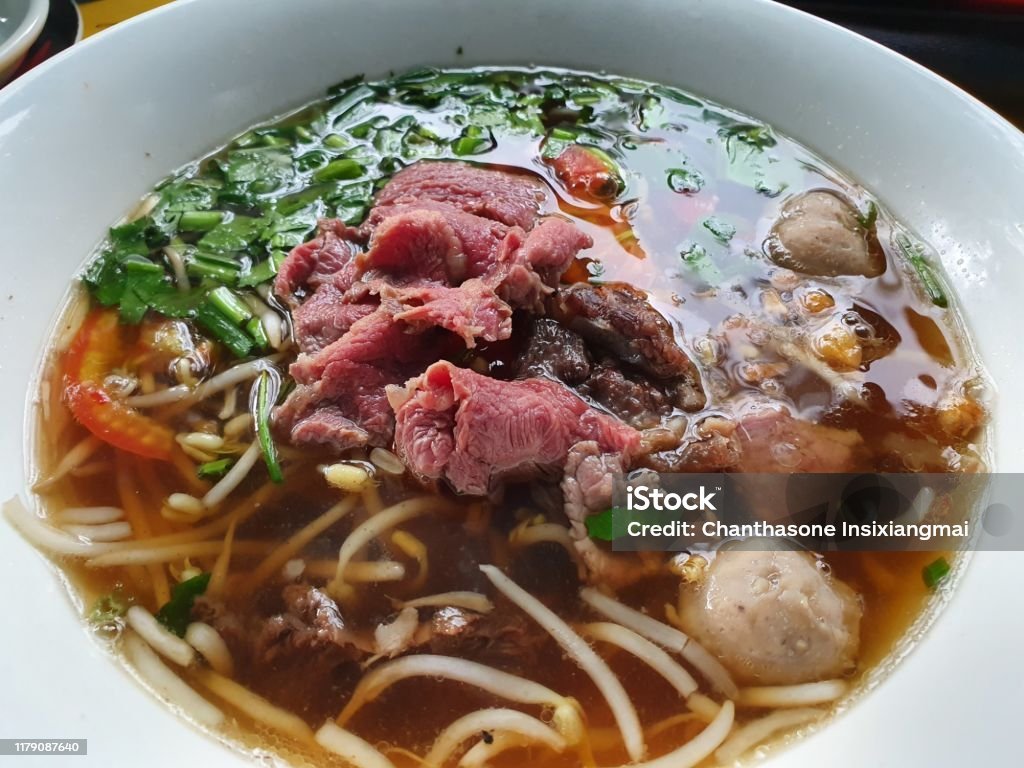
Hue, chosen as the capital of the Nguyen Dynasty, was the cultural and political heart of Vietnam from 1788 to 1945. During this period, the city attracted talented individuals from all corners of the country and became a melting pot of various cultural influences. It was within this unique environment that Nhã nhạc (Hue Court Music), one of the most important traditional music genres of Vietnam, developed and flourished to its highest level. The history of Nhã nhạc stretches over a thousand years, tracing its origins to the royal courts of the Ly and Tran Dynasties, with the form reaching its peak under the Nguyen Dynasty.
The music of the Nguyen Dynasty’s court was not merely a form of entertainment, but an embodiment of royal authority and power, a means of expressing the grandeur and legitimacy of the monarchy. Through intricate compositions, Nhã nhạc was woven into the fabric of royal ceremonies, from coronations to memorial services, and became a symbol of the monarchy’s perpetuity and prosperity. It was used in state rituals and public ceremonies, and, through this, Nhã nhạc became intertwined with the cultural identity of the Nguyen Dynasty, ultimately shaping the music of the entire nation.

Early Roots of Nhã Nhạc in Vietnam’s Royal History
The origins of Nhã nhạc can be traced back to the early periods of Vietnamese feudal history. During the reign of King Dinh in the 10th century, the first signs of court music began to emerge. However, due to the political and historical turbulence of the time, there are no surviving records of these early musical practices. Similarly, the Early Le Dynasty also saw the development of court music, but its precise forms remain elusive due to the lack of detailed documentation from that period.
It was not until the Ly and Tran Dynasties (11th-14th centuries) that Nhã nhạc began to take more concrete shape. Historical accounts suggest that the Ly Dynasty was greatly influenced by Cham culture, especially in the realm of dance and music. The Tran Dynasty continued this development, enriching the court music with a variety of instruments and performance forms, particularly in their orchestral and dance pieces. During the Tran Dynasty, royal performances became more elaborate, incorporating both grand and small ensembles, such as Đại nhạc (grand orchestra) and Tiểu nhạc (small ensemble), which laid the foundation for the formalization of court music.
By the time of King Le Thanh Tong in the 15th century, Nhã nhạc had become an established part of the royal court’s cultural heritage. King Le Thanh Tong implemented institutional reforms to solidify the role of court music in Vietnamese society. He created specific government bodies, such as the Đồng Văn (Department of Music) and Nhã Nhạc (Court Music), which were responsible for overseeing the composition, research, and performance of court music. These reforms played a crucial role in ensuring that Nhã nhạc became an integral part of court life and a key component of royal rituals and ceremonies. Under Le Thanh Tong’s reign, music was not just an aesthetic practice, but a political tool used to reinforce the divine authority of the emperor.

The Rise of Nhã Nhạc Under the Nguyen Dynasty
The true flowering of Nhã nhạc occurred during the Nguyen Dynasty (1802-1945), particularly in the 19th century, when the art form reached its most sophisticated level. Emperor Gia Long, the founder of the Nguyen Dynasty, was deeply invested in creating a stable and powerful monarchy. He recognized that court music played an essential role in asserting royal power and legitimacy. Under his reign, Nhã nhạc became more formalized, and its structure was further refined. Gia Long was particularly keen on importing musical practices from China and integrating them with local traditions, ensuring that the music reflected both Vietnam’s rich cultural heritage and its relationship with neighboring empires.
The importance of Nhã nhạc to the Nguyen emperors is evident in their efforts to promote and institutionalize it. Emperor Minh Mang, who ruled from 1820 to 1840, made significant contributions to the development of the art form. In 1824, he commissioned the construction of Duyet Thi Duong, a grand theater in the Imperial City of Hue, specifically designed for the performance of court music and opera. This marked a new chapter in the history of Vietnamese court music, as it created a dedicated space for musical performances to be staged with all the grandeur befitting royal rituals.
The Nguyen court also invested heavily in the training and development of musicians. Under the reign of Emperor Minh Mang, the Việt tương đội (court music troupe) was established, comprising 200 musicians and performers. This troupe was responsible for performing Nhã nhạc during important court ceremonies and public events. The court’s music ensemble grew larger and more diverse, incorporating a wide range of instruments, including stringed instruments, wind instruments, and percussion, all of which were carefully organized to create a harmonious and balanced sound.
Formalization and Institutionalization of Nhã Nhạc
During the reign of Emperor Tu Duc (1841-1883), Nhã nhạc reached its pinnacle, with the formalization of musical genres and the establishment of music schools and academies. Tu Duc’s efforts were not limited to the performance of court music; he also sought to codify the theory and practice of Nhã nhạc, ensuring its continuity for future generations. He established the Minh Khiem Duong Theater in 1864, which became one of the most prominent venues for the performance of Nhã nhạc. In addition to music, Emperor Tu Duc took a keen interest in the development of poetry and traditional theater, blending these elements into the performances at the royal court.
During this period, Nhã nhạc became more structured, with distinct genres being identified for different royal rituals. These genres included Giao nhạc (offering music), Miếu nhạc (temple music), Ngũ tự nhạc (five-tone music), and Đại triều nhạc (imperial music), among others. These musical forms were carefully composed to suit the specific occasions for which they were intended, such as royal banquets, religious ceremonies, and public celebrations.
The influence of Nhã nhạc also extended beyond the royal court and into the everyday lives of the people. The imperial court music often overlapped with folk music traditions, creating a fusion of high and low culture that enriched the musical landscape of Vietnam. The Nhã nhạc genre was regarded as the epitome of refined, high-status music, while folk music retained its place in the homes and marketplaces of common people. Over time, Nhã nhạc became a symbol of national identity, representing the unity and cultural pride of the Vietnamese people.
Decline and Survival of Nhã Nhạc
Despite its grandeur, Nhã nhạc faced significant challenges as Vietnam entered the 20th century. The period of French colonial rule (1858-1954) severely disrupted the traditional systems of government and culture in Vietnam. The fall of Hue in 1885 marked the beginning of a long period of political upheaval, and the Nguyen emperors lost much of their power. The court’s activities, including the performance and development of Nhã nhạc, were no longer a priority. As a result, many of the musicians who had devoted their lives to Nhã nhạc found themselves without patrons, and the art form began to decline.
During the reign of Emperor Bao Dai (1925-1945), there were attempts to revive the court music, but these efforts were largely ineffective. The political instability and the influence of Western music, particularly during the colonial period, eroded the traditional musical structures that had supported Nhã nhạc. The traditional instruments, performances, and repertoire began to fade into obscurity.
By the time the last Nguyen emperor, Bao Dai, abdicated in 1945, Nhã nhạc had lost its place as the dominant cultural force in Vietnam. The court music, once performed during royal ceremonies, was no longer heard in the halls of power. Many of the ancient musical instruments and compositions were forgotten or lost, and the art form was at risk of disappearing altogether.
Revival and Global Recognition
Despite these challenges, Nhã nhạc has experienced a remarkable revival in recent years. In the late 20th century, scholars and musicians began to rediscover the rich history of Nhã nhạc and work to preserve it. In 2003, UNESCO recognized Nhã nhạc as a Masterpiece of the Oral and Intangible Heritage of Humanity, a major step in ensuring the survival and global appreciation of this unique art form. This recognition brought international attention to the art of Hue court music, helping to restore its status as a significant part of Vietnam’s cultural heritage.
Efforts to revive Nhã nhạc have included the establishment of music schools and cultural institutions dedicated to teaching and preserving the art. Musicians and artists from around the world have also contributed to the revival, incorporating Nhã nhạc into contemporary performances and global musical exchanges. The Nguyen Dynasty’s court music, once relegated to the past, has found new life in the 21st century, and it continues to be a symbol of Vietnam’s cultural identity and national pride.
Conclusion
Nhã nhạc, the court music of the Nguyen Dynasty, represents the pinnacle of traditional Vietnamese music. It is a product of centuries of development, influenced by both indigenous and foreign traditions, and refined through generations of musicians and emperors. Today, Nhã nhạc stands as a testament to the cultural resilience of the Vietnamese people, having survived the vicissitudes of history to become a cherished part of Vietnam’s intangible cultural heritage. With continued efforts from scholars, musicians, and cultural institutions, Nhã nhạc will undoubtedly continue to thrive and inspire future generations.









Comments are closed.